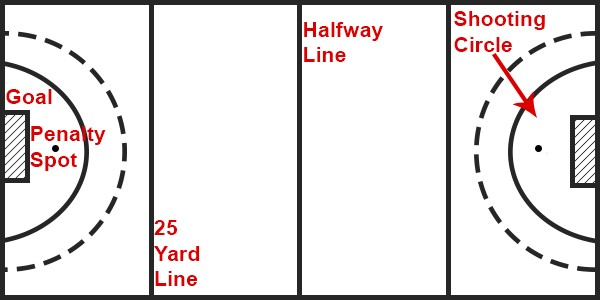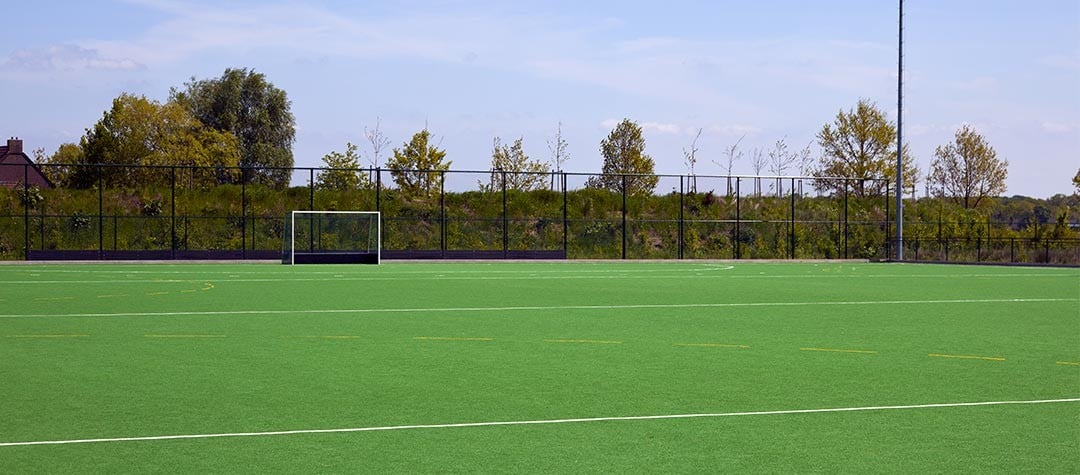Familiarise yourself with the layout and dimensions of a traditional field hockey pitch.
Hockey has traditionally been played on grass but increasingly matches are played out on astroturf pitches to allow for a more even and slicker surface.
Modern technology has meant that artificial or astroturf pitches have become commonplace in hockey. This type of surface allows play in all types of weather and gives a more even run of the ball along the surface. The hockey pitch surface is usually watered before top competition games. As a result of all this, it’s best to get a feel for playing hockey both on and off grass, as an astroturf pitch can see the ball move much faster than on a normal grass pitch.
Key hockey pitch dimensions:
The diagram below shows a hockey pitch and where each of the key dimensions listed above can be found.

-
Hockey pitch size. The traditional hockey pitch is 100 yards (91.4m) long and 60 yards (55m) wide.
-
The goal. The hockey goal is 7ft tall (2.14m) by 12ft wide (3.66m).
-
Penalty spot. As in football, this is the point from which a penalty strike is taken in a game of hockey. This is 7 yards (6.4m) from the goalmouth.
-
Striking circle . The striking circle is a ‘D’-shaped area measuring 16 yards out from the goal post. An attacking player must be within this area to score. It is also known as the ‘shooting circle’, ‘goal circle’ or ‘D’.
-
Back line . The back line is simply a line marking the lengthwise end of the hockey pitch. It is 60 yards long.
-
Half-way line . This is simply the line that divides the hockey field into two different halves.
-
The 25-yard line . This is a line found in each attacking portion of the pitch and is 25 yards (22m) from the goal. Intentional infringements within this area can result in the award of a penalty corner.















